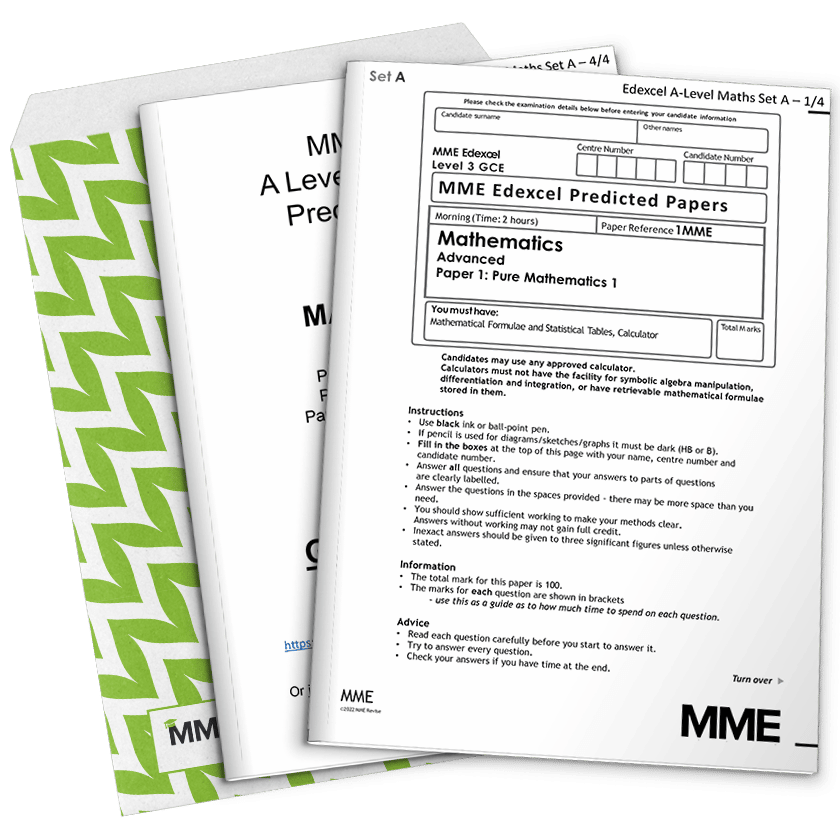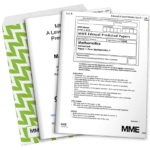Integrating Trig Functions
Integrating Trig Functions Revision
Integrating Trig Functions
Integrating trigonometric functions is little more than both an exercise in memory and application of that which we have already learned. It combines all of the skills so far and allows for very difficult-looking functions to be integrated.
Make sure you are happy with the following topics before continuing.
Some Results Have to be Memorised
There is no easy way to derive these results, so the best strategy is to commit them to memory.
\int \sin(x)dx=-\cos(x)+c
\int \cos(x)dx=\sin(x)+c
\int \sec^{2}(x)dx=\tan(x)+c
\int \cosec(x)\cot(x)dx=-\cosec(x)+c
\int \sec(x)\tan(x)dx=\sec(x)+c
\int \cosec^{2}(x)dx=-\cot(x)+c
If there is a coefficient before x, then you divide by the coefficient when you integrate (just like when integrating exponentials).
\int \sin(ax+b)dx=-\dfrac{1}{a}\cos(ax+b)+c
The other results follow in a similar way.
Other Results Can Be Derived
Other results can be derived using methods we have already learned.
Example: Find the integral of \tan(x).
\begin{aligned}\int \tan(x)dx&=\int\dfrac{\sin(x)}{\cos(x)}dx\\[1.2em]&=-\int\dfrac{-\sin(x)}{\cos(x)}dx\\[1.2em]&=-\int\dfrac{\dfrac{d}{dx}(\cos(x))}{\cos(x)}dx\\[1.2em]&=-\ln(|\cos(x)|)+c\end{aligned}
Double Angle Formulas and Identities
We cannot integrate functions such as \sin^{2}x directly, but we can integrate functions like \sin(2x). This means that we can rearrange the double angle formulas to be able to integrate many more trigonometric functions. These are the most important ones to remember.
\sin^{2}(x)=\dfrac{1}{2}(1-\cos(2x))
\cos^{2}(x)=\dfrac{1}{2}(1+\cos(2x))
\sin(x)\cos(x)=\dfrac{1}{2}\sin(2x)
\dfrac{2\tan(x)}{1-\tan^{2}(x)}=\tan(2x)
We can use identities for the same purpose. For example, we cannot integrate \tan^{2}(x) directly, but we can integrate \sec^{2}(x), so the identities below can help.
\tan^{2}(x)=\sec^{2}(x)-1
\cot^{2}(x)=\cosec^{2}(x)-1
Example 1: Using Results from Memory
Integrate \sec^{2}(3x)
[1 mark]
The result from memory is:
\int \sec^{2}(x)dx=\tan(x)+cNow add in the coefficient of x:
\int \sec^{2}(3x)dx=\dfrac{1}{3}\tan(3x)+c
Example 2: Double Angle Formulas
Integrate \sin(x)(\sin(x)+\cos(x))
[3 marks]
\begin{aligned}&\int \left( \sin(x)(\sin(x)+\cos(x))\right) dx\\[1.2em]&=\int \left( \sin^{2}(x)+\sin(x)\cos(x)\right) dx\\[1.2em]&=\int\left( \dfrac{1}{2}(1-\cos(2x))+\dfrac{1}{2}\sin(2x)\right) dx\\[1.2em]&=\dfrac{1}{2}\int\left( 1-\cos(2x)+\sin(2x)\right) dx\\[1.2em]&=\dfrac{1}{2}\left(x-\dfrac{1}{2}\sin(2x)-\dfrac{1}{2}\cos(2x)\right)+c\\[1.2em]&=\dfrac{1}{2}x-\dfrac{1}{4}\sin(2x)-\dfrac{1}{4}\cos(2x)+c\end{aligned}
Integrating Trig Functions Example Questions
Question 1: Integrate:
i) \cos(3x)
ii) \sin(4x+1)
iii) \cosec(3-x)\cot(3-x)
iv) \sec^{2}(199x)
v) \cosec^{2}\left(\dfrac{1}{3}x+\dfrac{2}{7}\right)
vi) \sec\left(\dfrac{1}{9}x\right)\tan\left(\dfrac{1}{9}x\right)
[6 marks]
i) \int \cos(3x)dx=\dfrac{1}{3}\sin(3x)+c
ii) \int\sin(4x+1)dx=-\dfrac{1}{4}\cos(4x+1)+c
iii) \int \cosec(3-x)\cot(3-x)dx=\cosec(3-x)+c
iv) \int \sec^{2}(199x)dx=\dfrac{1}{199}\tan(199x)+c
v) \int \cosec^{2}\left(\dfrac{1}{3}x+\dfrac{2}{7}\right)dx=-3\cot\left(\dfrac{1}{3}x+\dfrac{2}{7}\right)+c
vi) \int \sec\left(\dfrac{1}{9}x\right)\tan\left(\dfrac{1}{9}x\right)dx=9\sec\left(\dfrac{1}{9}x\right)+c
Question 2: What is the integral of \cot(x)?
[2 marks]
Question 3: Integrate \sin^{2}(x)-\cos^{2}(x)
[3 marks]
Question 4: Find the integral of 3\cot^{2}(4x)
[3 marks]
Integrating Trig Functions Worksheet and Example Questions
Integration
A LevelYou May Also Like...

MME Learning Portal
Online exams, practice questions and revision videos for every GCSE level 9-1 topic! No fees, no trial period, just totally free access to the UK’s best GCSE maths revision platform.






